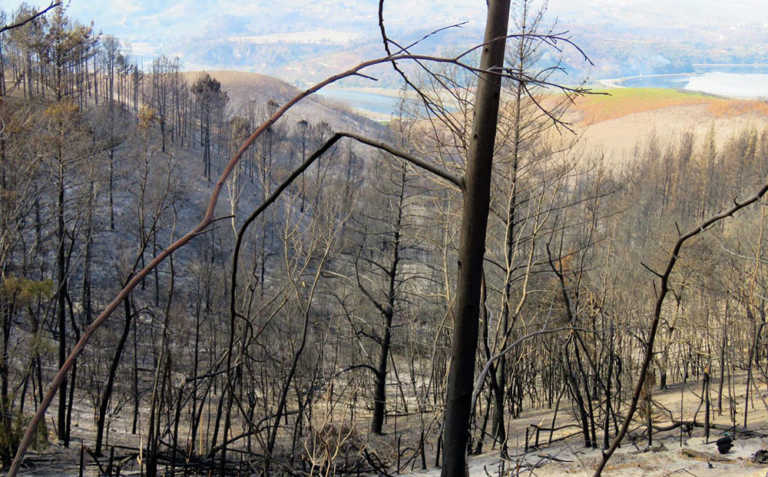
Photo: Tineke Kraaij
The replacement of natural fynbos vegetation with pine plantations in the southern Cape added to the relentless fires, the report says.
Over four days in June 2017, the Knysna fires burnt 15000ha, claiming the lives of seven people and destroying more than 5000ha of commercial pine plantations and about 800 buildings.
Izak van der Merwe, a forestry scientist at the Department of Agriculture, Forestry and Fisheries, said pine and eucalyptus trees were extremely flammable because they were high in resin and shed needles.
The dry needle mass under the trees was also very combustible. On the other hand, indigenous, evergreen forests were far less flammable because of the plants’ high moisture content and the low supply of combustible matter.
The severity of the 18 to 24-month drought that preceded the fires, on the other hand, was higher than ever recorded in the historical weather record, and this contributed significantly to the impact of the fire.
Prof Brian van Wilgen, a fire ecologist with Stellenbosch University’s DST-NRF Centre of Excellence for Invasion Biology, and one of the co-authors, said large tracts of natural vegetation in the southern Cape had been systematically replaced with plantations of the Pinus and Eucalyptus species, increasing above-ground biomass from about 4t/ha to 20t/ha.
“Given that more than two-thirds of the area that burnt was in one of these altered conditions, our findings demonstrate clearly that fuel loads have substantially increased compared to earlier situations, when the landscape would have been dominated by regularly burnt, uninvaded natural vegetation,” he said.
It is estimated that pine trees have invaded more than 90% of the Garden Route National Park’s fynbos vegetation at various densities. Additional invasions by Australian Acacia and Eucalyptus species cover a further 29% and 14% respectively, according to Van Wilgen.











